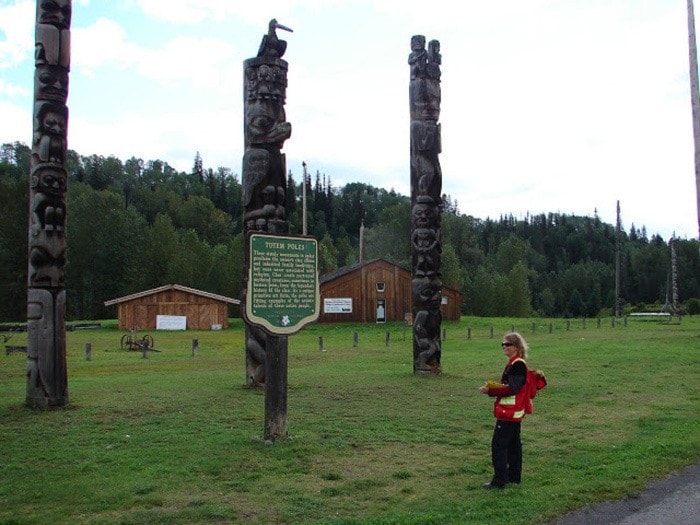OVER the past decade, Northwest Community College (NWCC) has developed and offered a series of field schools that connects students with the physical and cultural richness that defines the Northwest.
The field schools’ unique and hands-on applied study features the spectacular geography and environment of the Northwest, while bringing students into First Nations communities and learning on the land with the local First Nations people.
Three major field schools are offered at NWCC’s Terrace Campus—Kitlope, Haida Gwaii, and Stewart/Telegraph.
The Kitlope Field School takes place in the largest intact temperature coastal rainforests in the world. A pristine ecosystem, in a land of mountains, fjords, and valleys with rivers of pure clean water fed by thousands of rushing glacial streams, supporting an old growth rainforest, full of giant trees of sitka spruce and cedar. In this amazing place, students are guided by the Haisla and Henaaksiala people, and learn about the rich cultural history, and the special relationship to their ancestral home.
The Haida Gwaii Field School gives students a chance to explore this unique island archipelago on the edge of the Pacific Ocean, and the Haida culture. Students learn about the ancient Haida history and archaeology, Haida life ways, and of the unique island geography and ecology. Students are based in the Skidegate area, but explore other areas like Masset, South Morseby Island, and Mosquito Lake to canoe or kayak and learn about the unique ecology, Haida history, ethnobotany, and the cultural usages of plants.
The Stewart/Telegraph Field School successfully blends the disciplines of anthropology, archaeology, geography and geology, by demonstrating how each one of these disciplines depends on an understanding and respect of the other.. While in Telegraph Creek, students get to learn from the Tahltan, about their territory, and their rich cultural history, including the unique relationship the Tahltan had with the volcanic complex of Mt. Edziza and the obsidian trade from this location. This field school also includes much discussion on contemporary issues facing the Tahltan, including hydro-electric development and mineral and fossil fuel extraction.
Sheree Ronaasen, an anthropology instructor at NWCC since 2001 who’s been key to the field studies development, integrating First Nations content, and working actively in collaboratively with First Nations communities, says NWCC’s field schools have proven a very popular option for students who can earn between three and six university credits in two to three weeks of study.
“What has proven to really resonate with field school students, in addition to the course content, is they gain an emotional connection to the land and people,” said Ronaasen. “This allows students to develop a deeper understanding and respect for First Nations culture and further desire for lifelong learning and creativity.
“First Nations people have cultural traditions and histories that go back millennia, and rich understandings of the land and animals, and have a special relationship to Mother Earth,” adds Ronaasen. “To share this wisdom with students has created an educational opportunity that students have reported, as being life transforming.”
NWCC nursing student Kim Latimer attended the Stewart/Telegraph field school in 2011 and one of the lasting memories for her was the sharing of knowledge from the Tahltan Elders who participated.
“I really enjoyed hearing the stories the First Nations Elders told,” said Latimer. “Theirs is such a unique culture in regards to their traditions and background."
Find out more about NWCC Field School dates at nwcc.ca
(The above was provided by Northwest Community College.)
